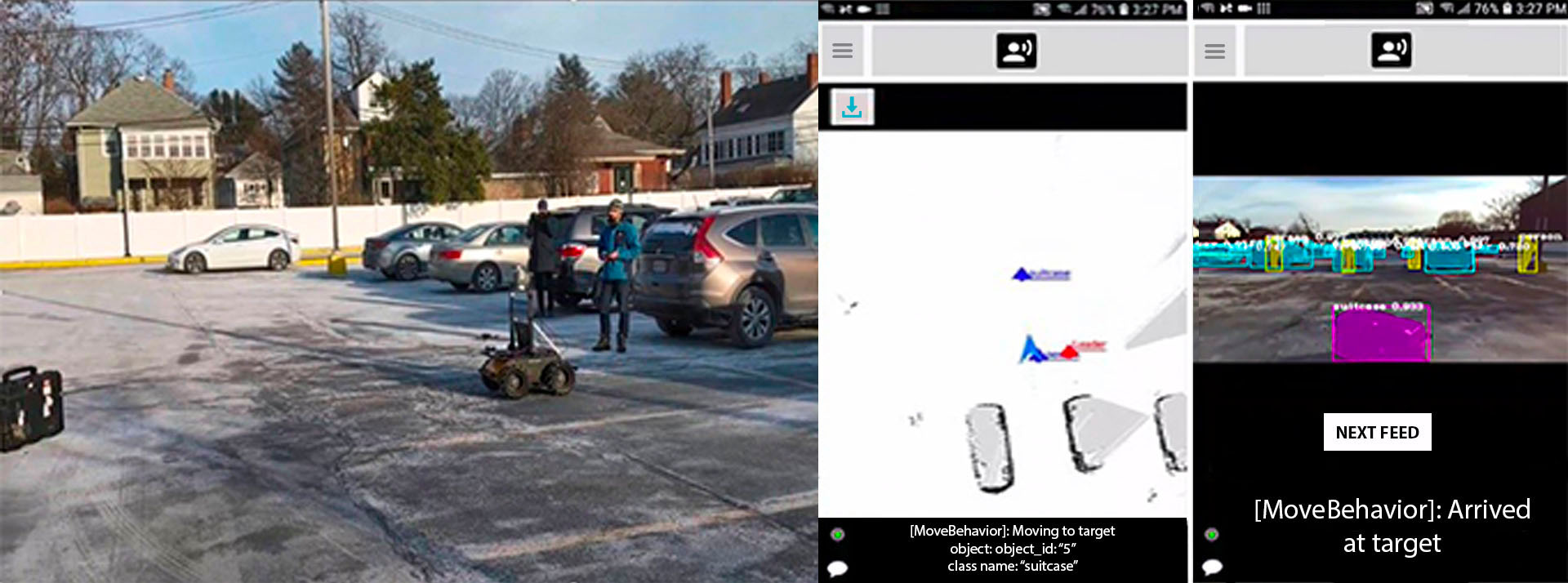SHEPARD
Using smart devices for communication with robots
An intuitive interface for the Army
With current control schemes for robots, a Commander’s orders must be executed by trained operators who rely on cumbersome controls for teleoperation. To solve this problem, Charles River Analytics developed SHEPARD, a natural, hands-free, reliable human-robot communication method.
Benefits of the SHEPARD approach include:
- Increased soldier effectiveness by reducing the cognitive burden of interacting with robotic teammates.
- Accelerated adoption of unmanned vehicles (UxVs) through the increased trust of their operators.
By removing the need for teleoperation, SHEPARD allows the robotic platform to become a true support agent.
“Our approach to managing UxVs is in stark contrast with how robot operators currently direct unmanned platforms—they use cumbersome, hands-on, head-down controllers. Our goal with SHEPARD is to develop controls that let robots seamlessly integrate into human teams.”

Camille Monnier,
SHEPARD Principal Investigator
The challenges of UxV integration
UxVs are vital to military operations, but their widespread integration faces significant challenges. Current control schemes require a trained operator to remotely control an unmanned system to execute a Commander’s orders. This increases the complexity of the command structure, introducing latency and reducing situational awareness. This approach to directing robots is in stark contrast to the ease with which human teammates use speech and gestures to seamlessly interact with each other.
Fusing operator input with operator intent
In response to the US Army’s need for advanced, intuitive interfaces, we designed and prototyped a system for Supervisory HMI Enabling Practical Autonomous Robot Direction (SHEPARD). SHEPARD fuses multiple proven robot control technologies to provide a hands-free human-machine interface (HMI) for operators in diverse environments.

SHEPARD consists of:
- A portable software package
- A modular hardware kit, which includes a camera and a lightweight, wearable operator control unit
SHEPARD’s control module fuses context cues with inputs from multiple control modalities, such as voice and gestures. The module infers a model of operator intent, which can be used to resolve ambiguous commands and provide situation-appropriate feedback. This enables natural, reliable control of multiple platforms.
Related Work
MANTA: A platform-independent, natural control and autonomy robot appliqué that enables a user to easily direct one or more host platforms to perform a range of autonomous behaviors.
MINOTAUR: An intuitive interface for controlling robotic leader-follower systems in small-team operations.
Contact us to learn more about SHEPARD and our other robotics and autonomy capabilities.

